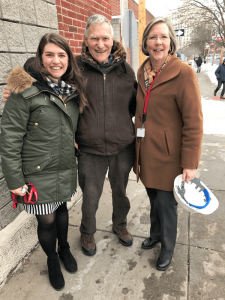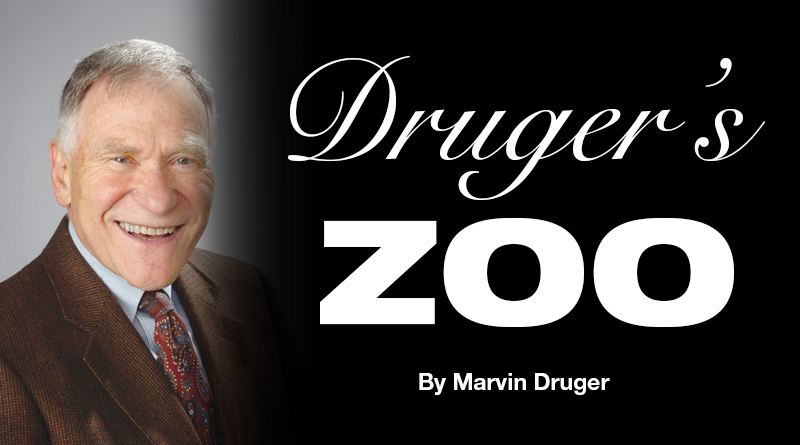Face of the Needy
By Marvin Druger
Email: mdruger@syr.edu

There are many different social worlds that we can identify, such as the corporate world, the middle-class world, the university world, the rich world, the poor world, etc., each having its own particular characteristics. We each live in our specific world, often without recognizing the existence of other worlds.
As a child, I experienced the poor world. I was raised in a poor neighborhood in Brooklyn. My father was a hard-working truck driver and my mother was a housewife. I lived in a small apartment with two brothers, my sister, my mother and father and cockroaches, mice and other vermin.
There were few luxuries and we lived from paycheck to paycheck. When my father injured his back and was out of work, he had to accept handouts for a while from the trucker’s union to support the family. I still remember an incident as a small boy when my father and I were on the subway. He was carrying a bag of groceries from the union. “What’s in the bag, daddy,” I asked. He seemed ashamed, and he said, “Shhhhh.”
I also recall when my father promised to buy me a cardboard fort. I was devastated when he told me that he couldn’t afford it.
Such childhood memories stand out in my mind. I belonged to a social, sports club in the neighborhood known as the Wildcats. We played basketball, softball, punch ball, stickball and other games, and we even had purple jackets with the team name on the back.
We didn’t drink alcohol or take drugs, mainly because we wanted to keep our bodies in shape for our sports. Girls were a far thought in the background, although we did occasionally have parties. At our parties, instead of marijuana, cigarettes and beer, we drank Pepsi Cola and ate salami sandwiches.
Fortunately, I was smart at school and I graduated magna cum laude from Pershing Junior High School and summa cum laude from New Utrecht High School. In those days, kids went to work after graduating high school. My friends told me about Brooklyn College and said that the tuition was free. Since it was free, I decided that I’d go to college.
My older sister never attended college. Instead, she got a job after high school to support the family. Because she worked, I could attend college. My younger brothers were also able to attend college. The opportunity to attend college led to good outcomes for my brothers and myself.
One brother, now retired, became an executive in a major banking firm. My other brother, now deceased, earned a doctorate in physics and focused his attention on theoretical physics. I earned a PhD in zoology (genetics) from Columbia University and was fortunate enough to lead an academic life of teaching and research at Syracuse University for many years.
I retired in 2009, but I conduct campus tours, present a radio program on WAER-FM 88.3 (“Science on the Radio), direct two programs in science for students, write this column for 55 Plus magazine, and have other activities.
Pat, my wife, worked with me throughout my career. We had a wonderful relationship. I generated ideas and she did the work, while I got the credit. Besides three great-children and seven grandchildren, Pat was the mainstay of my life and cornerstone of my family.
I was never concerned about money; I was too busy with my academic pursuits. Pat invested wisely and now, in retirement, I am financially stable. As Famous Amos, the “cookie man,” once asked me, “What more do you need than your needs and your health?”
I am still influenced by my poor childhood. I have difficulty buying a shirt for more than $15, and I spend a lot of time in the Dollar Store. My accountant told me that I have an affliction that is common to people of my age who passed through the years of the Great Depression and an impoverished childhood.
It’s called “depression mentality.” Some people call it “being cheap.”
All of the above is a preamble to the main theme of this article, i.e., the world of poverty and homelessness. I received an email from a former student who has worked at the Rescue Mission in Syracuse for many years. She invited me to a tour of the Rescue Mission.
I realized the Rescue Mission and the world of the homeless was one about which I was totally ignorant. Although I had an impoverished childhood, my family always had a roof over its head and food to eat. I was pleased to get this invitation to learn about the homeless world about which I knew virtually nothing.
Plight of the homeless
My companion, Victoria, and I visited the Rescue Mission and gained insights about this world. I want to disseminate these insights to others.
Victoria and I had a glimpse of the homeless world on some of our travels. We would see people lying on the street, wrapped in newspapers or rags. Or, we would encounter impoverished people begging for money. On one occasion, some of these individuals were gathered on a street where we were walking at night. Victoria became frightened. “Don’t worry,” I said jokingly, “If they attack us, you scream, and I’ll run for help!” But the homeless world is no joke.
The Syracuse Rescue Mission was founded in 1887. The theme of the Rescue Mission is to “share hope and end hunger and homelessness, change lives and strengthen communities one person at a time.”
The Rescue Mission provides a wide range of services, including three free meals per day all year, dorms with beds, permanent and temporary housing, an outreach service that provides food, water, clothing, blankets and other support for homeless people, an education resource center, health services, a fitness room, and tech stations with internet access. The Rescue Mission also offers nighttime shelter, clothing and help in getting jobs.
The Rescue Mission also develops individual plans and helps find access to needed employment. An emergency shelter has an employment and education resource center, health services and a public bathroom with showers.
A Rescue Mission van cruises around city areas seeking anyone who is homeless or is in obvious need of help. If you see an individual on the street that is homeless or needs help, call 211 and help will be forthcoming.
The Rescue Mission is funded by contributions from people like you and me. More than 60 percent of the funds come from selling donated goods in 17 Thrifty Shopper stores. You can donate clothing and household goods and receive a tax donation credit. You can even donate furniture and your old car, boat or motorcycle. You can arrange pick-up service by calling 315-453-7242.
Volunteers are always needed at the Rescue Mission. If you want to devote some of your time and skills to helping homeless people at the Rescue Mission, you can call volunteer services at 315-701-3842, or check out rescuemissionalliance.org for opportunities.
If you want to find out details about donations, you can call Carolyn Hendrickson, senior philanthropy officer, at 315-701-3855 (email: Carolyn.Hendrickson@RMSyr.org).
There is no better feeling than doing something kind and useful for someone else, especially a person in need. If you don’t believe me, please do one kind thing for someone today, and see how you feel.
The visit to the Rescue Mission was very insightful. The staff members I met were devoted professionals. They were enthusiastic about their mission, and it was easy to tell that they really cared deeply about people. They were all eager to share information about the Rescue Mission.
We visited the kitchen where about 700 meals per day are served. The meals are available free to anyone who needs them. I didn’t say anything, but I was tempted to ask for a grilled cheese or egg salad sandwich with French fries. They looked delicious.
I observed there were mostly men of varying ages and skin color. What upset me were the sad, hopeless faces on these men. There was no conversation among them. Each individual seemed isolated from humanity.
A number were mentally ill, and others simply fell upon misfortune. They sat or stood around without motivation to do much. I wondered what thoughts were in the minds of these unfortunate people?
I thought about the inequities in society and it angered me. Why should some people have so much and these people have so little?
Seeing the work of the Rescue Mission makes you appreciate what you have in life, even if it may seem little. You also come to appreciate the dedicated people who offer services to the poor and homeless.
I was greatly impressed to see people who dedicate their lives to others less fortunate. I was also very thankful that my life was not a homeless life, but everyone should know more about this other world.
I hope this story has provided a new appreciation of the poor and homeless and set in motion getting involved and finding some way to help. The homeless and impoverished are humans, just like other humans. Every human is unique and important and deserves a place to live and express his or her unique talents.

